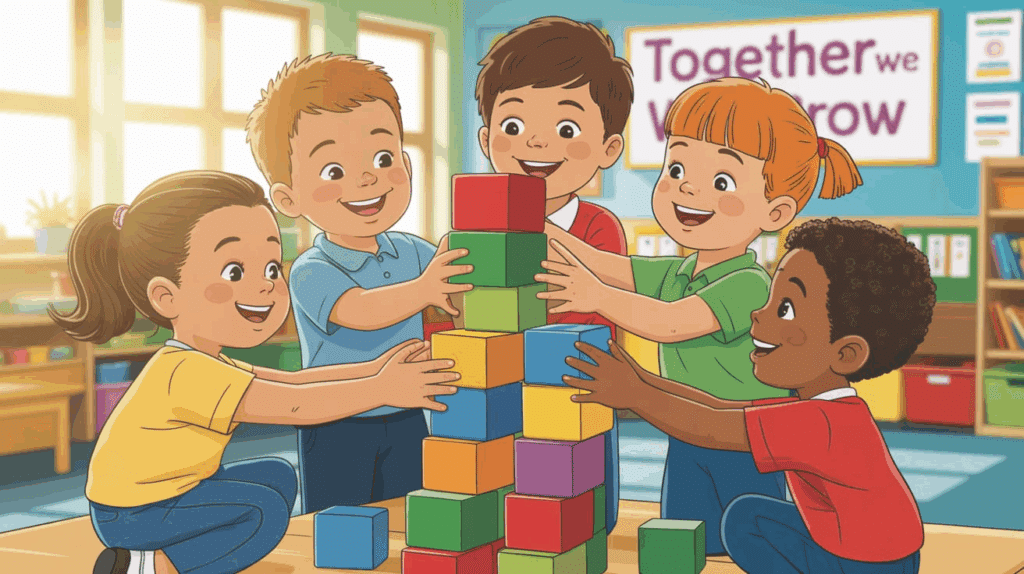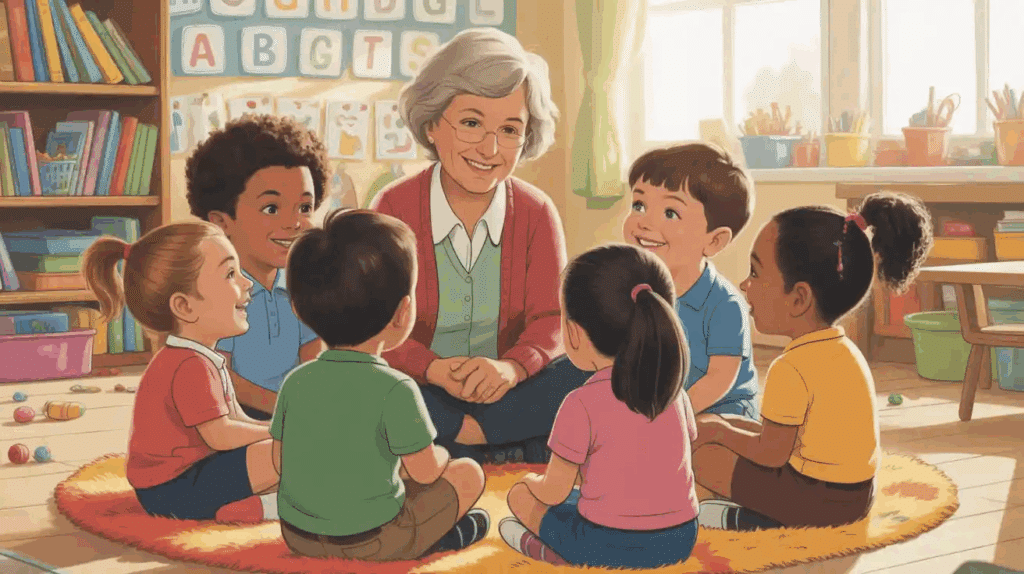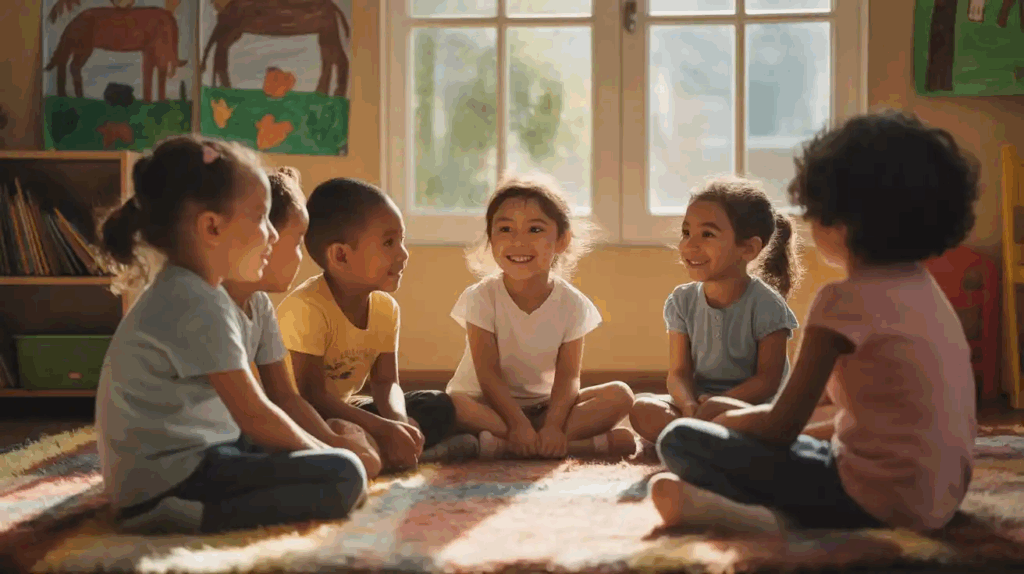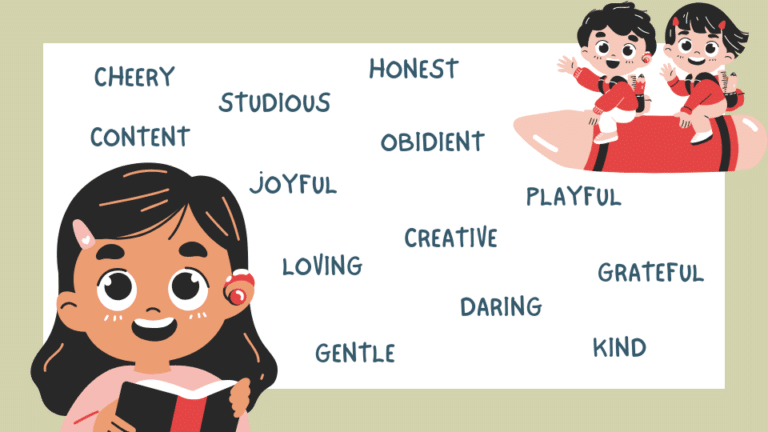Are you staring at a room full of students who barely know each other’s names?
It’s that familiar September feeling: eager faces mixed with nervous energy, and you wondering how to transform this collection of individuals into a thriving learning family.
Imagine walking into a classroom where every student feels valued, heard, and ready to support one another. That’s not wishful thinking – it’s completely achievable.
Let’s explore practical strategies that’ll help you create the warm, inclusive community your students deserve.
What is a Classroom Community?
A classroom community is more than just a group of students sharing the same space; it is a supportive, inclusive environment where everyone feels valued, respected, and connected.
In this kind of setting, students are encouraged to express themselves, take academic risks, and collaborate with their peers.
The teacher plays a key role in fostering this sense of belonging by creating a culture of trust, empathy, and shared responsibility.
A strong classroom community promotes not only academic success but also emotional and social growth. It transforms the classroom into a place where students feel safe to learn, make mistakes, and grow together.
Ultimately, it lays the foundation for lifelong learning and meaningful relationships within and beyond the classroom walls.
Key Elements of a Strong Classroom Community

A strong classroom community is built on intentional practices and shared values that bring students and teachers together in meaningful ways.
It goes beyond academics, nurturing relationships that foster emotional safety, collaboration, and a sense of purpose.
Mutual Respect and Trust
Mutual respect and trust form the foundation of any strong classroom community. When students and teachers treat each other with dignity and honesty, it creates a safe atmosphere where learning can flourish.
Trust encourages students to take risks, ask questions, and support one another without fear of judgment or exclusion.
Shared Goals and Values
A unified classroom thrives when students and teachers work toward common goals and uphold shared values. These guiding principles create a sense of purpose and direction, helping everyone feel connected to a greater mission.
When students understand and embrace classroom values, they contribute more actively to maintaining a respectful and productive learning environment.
Student Engagement and Voice
When students are engaged and their voices are heard, they become active participants in their learning path.
A strong classroom community fosters input, celebrates diverse perspectives, and empowers students to influence decisions that impact their learning experience.
Empowering students in this way promotes ownership, confidence, and a deeper connection to the classroom as a whole.
Why Building a Classroom Community Matters

Building a classroom community matters because it creates a positive, inclusive environment that benefits everyone involved.
For students, it fosters a sense of belonging and emotional safety, which leads to increased participation, stronger relationships, and greater confidence in their abilities.
When students feel connected, they are more likely to stay engaged and motivated, resulting in improved academic outcomes. Teachers also benefit from a cohesive classroom culture, as it encourages cooperation, reduces behavioral issues, and allows for more effective teaching.
The overall learning environment becomes more respectful, focused, and collaborative, making it easier to address challenges and celebrate successes.
In essence, a strong classroom community supports both academic achievement and personal growth, laying the foundation for a successful and fulfilling school experience.
Strategies for Creating a Positive Classroom Community
Creating a positive classroom community requires intentional actions that promote connection, trust, and mutual respect.
Teachers can take daily steps to foster an environment where students feel safe, supported, and motivated to learn.
- Greet students by name each day to build personal connections
- Establish clear, consistent expectations for behavior and interaction
- Encourage collaboration through group activities and projects
- Celebrate student achievements and efforts, big or small
- Include student voices in classroom decisions and discussions
- Create rituals or routines that promote a sense of belonging
- Incorporate social-emotional learning into regular instruction
- Model kindness, empathy, and respect in all interactions
By applying these simple yet powerful strategies, teachers can nurture a thriving classroom community where all students feel valued and engaged.
Classroom Community in Action
A strong classroom community comes to life in many ways across different educational settings.
In an elementary classroom, students begin each day with a morning circle, sharing thoughts and practicing active listening, which builds trust and empathy. In a middle school setting, a teacher might assign collaborative group projects where roles are shared, and every voice matters, fostering teamwork and respect.
In a high school class, students could help shape classroom norms, encouraging ownership and mutual accountability.
In all cases, the classroom feels safe and inclusive-students are eager to participate, support one another, and take risks in their learning.
These examples show how a strong community transforms the classroom into a space where both academic and personal growth can flourish.
Resources for Building Classroom Community
Building a strong classroom community is an ongoing process, and educators can benefit from a variety of practical tools and resources to support this journey. Here are some recommended options that provide inspiration, guidance, and hands-on strategies.
- The First Six Weeks of Schoolby Responsive Classroom for structured community-building routines
- Online courses from Edutopia and Coursera focused on social-emotional learning and classroom culture
- Teacher forums like Reddit’s Teachers and Edutopia’s community for sharing tips and real-life experiences
- Cooperative learning games and icebreakers to foster connection and trust among students
- Journaling activities or class meetings that give students a voice and space for reflection
By studying these resources, teachers can find meaningful ways to create a welcoming and supportive classroom environment
Wrapping It Up
Ultimately, a classroom community is not a destination but a continuous travel of connection, understanding, and collective empowerment.
By intentionally developing an environment of respect, engagement, and shared purpose, educators can unlock the profound potential within each student.
This approach changes education from a passive experience to an active, collaborative adventure where learning becomes a collective endeavor.


















